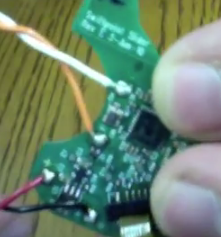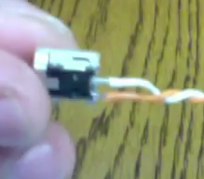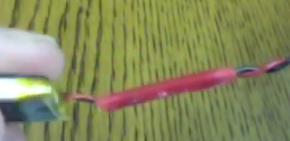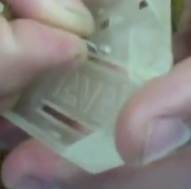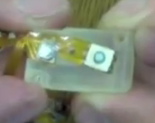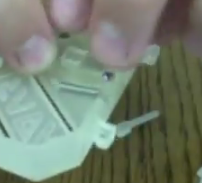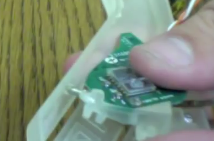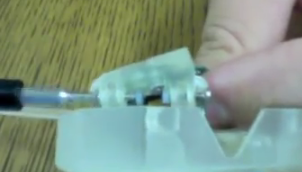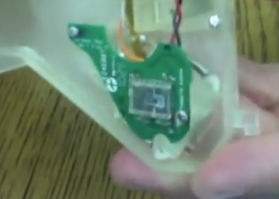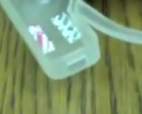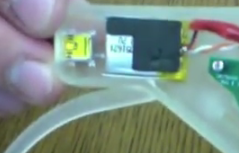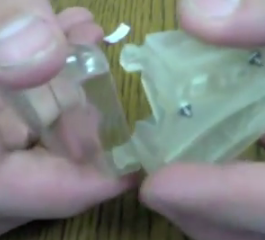How to build a 3D printed WOUSE
Here is a video showing the CAD work performed on the Wouse.
Parts List
Download the following .stl CAD files and print them using a 3D printer
1 x Left Side Main Case: left_side.stl
1 x Right Side Main Case: right_side.stl
2 x Lever: lever.stl
1 x Angled Brace: angled_brace.stl
2 x Buttons: button.stl
1 x Button Holder: button_holder.stl
Purchase the following off-the-shelf hardware
Glasses: (Supplier: McMaster-Carr)
Machine screws: (Supplier: McMaster-Carr)
12mm length, 0.35mm pitch M1.6 92000A007 (pkg. 50, need 1)
6mm length, 0.40mm pitch M2: 91200A102 (pkg. 100, need 1)
8mm length, 0.40mm pitch M2: 91200A104 (pkg. 100, need 4)
Machine nuts: (Supplier: McMaster-Carr)
Springs: (Supplier: McMaster-Carr)
9432K21 (pkg. 6, need 2)
Shims: (Supplier: McMaster-Carr)
8771K61 (pkg 500). These are a 1/2" diameter, 1/8" thick, the smallest that McMaster-Carr has. The shims in the video are from a local hardware store and had a smaller diameter (probably 3/8" dia., 3/32" thick). They are made from felt and are easy to cut, should be easy to modify.
USB Port: (Supplier: Mouser)
Mini-B type, 538-54819-0572
Wires: (Supplier: Mouser
22-28 gauge will work. For referencing the video, use orange (3.25"), white (3.25"), black (2.25"), and red (2.25"). If you only have one color, that will work too, but make sure you don't get them mixed up when you solder.
Obtain the following common supplies
- Small flat screwdriver
- Small Philips screwdriver
- Small pliers, preferably needle-nose
- Thin double-sided foam tape
- Super glue
Assembling the Wouse
The following video shows how to assemble a Wouse with the 3D printed parts and hardware.
Soldering
(Video Reference 0:00 )
Supplies needed: 4 different colored wires, soldering iron, solder, electrical tape Mini-B USB port, PCB with battery.
- Desolder the old wires for the battery and USB port.
- Solder the new wires into the PCB:
- Solder the orange and white wires onto the Mini-B USB port:
- Splice the black and red wires to the battery wires by using solder and electrical tape.
Springs
(Video Reference 2:42 )
Supplies needed: Both of the springs, the main case (left side), small pliers.
- Snap the springs into the half rings on the case using a small pliers.
Mouse Buttons
(Video Reference 3:01 )
Supplies needed: Swiftpoint mouse buttons (located on the ribbon cable), two 3D printed buttons, 3D printed button holder, main case, two 8mm screws, two M2 nuts, super glue.
- Push the 2 main buttons onto the button holder. The remaining tape should hold them in.
- Put the 3-D printed buttons into the main case (left side).
- Fasten the 3D printed button holder to the main case with the screws and nuts.
- Take the remaining 'button' on the ribbon cable and super glue it to the back of the button holder. Recall that this is for the scroll key on the Swiftpoint mouse.
PCB Brace
(Video Reference 4:43 )
Supplies needed: springs (which are already connected to the main case), 3D printed PCB brace, PCB assembly, one 6mm screw, one M2 nut.
- Click the 'top' spring into the half ring on the thicker end of the PCB brace.
- Click the 'bottom' spring into the half ring on the thinner end of the PCB brace.
- Fasten the PCB into the 3D printed PCB brace with the 6mm screw and an M2 nut. The head of the screw should be on the side of the PCB.
Levers
(Video Reference 5:53 )
Supplies needed: two 3D printed levers, two 8mm screws, two M2 nuts.
Fasten one of the levers in place with the hole concentric to one of the PCB brace holes, inside one of the two slots on the brace. It is important that the gears on the levers face the gears on the main casing, so they can lock together.
- Take a 8mm screw and thread it through the brace and into the lever. Put an M2 nut on the other side.
- Repeat for the other lever!
Pivot Point
(Video Reference 7:01 )
Supplies needed: one M1.6 screw, two M1.6 nuts.
- Thread the screw through the hole on the end of the PCB furthest from the brace. Put a nut on the other side. Leave about 2mm of clearance between the nut and the board so it is loose.
- Thread the screw through the outside case, and put a nut on the outside. The hole on the casing should be sandwiched between two nuts, but the board should be able to pivot around the screw due to the 2mm of clearance.
Tape and Glue
(Video Reference 8:12 )
Supplies needed: double sided foam tape, super glue.
- Cut two pieces of foam tape to match the following picture:
- Thread the USB wire between the pieces of foam tape and super glue the USB port in the slot.
Peel the protective wrap off the double sided tape and stick the battery in. Make sure the battery is not in contact with the solder connections of the USB port. It has an aluminum wrap which could cause a short.
Final Step
(Video Reference 9:59 )
Supplies needed: assembled left Wouse side, empty 3D printed right Wouse side, safety goggles.
- Take the old sides out of the safety goggles and snap in the 3D printed ones.
- Congratulations! You've built a Wouse!
If you have any hardware specific questions, you may contact Henry Clever at henryclever@ku.edu or phillip.grice@gatech.edu.







